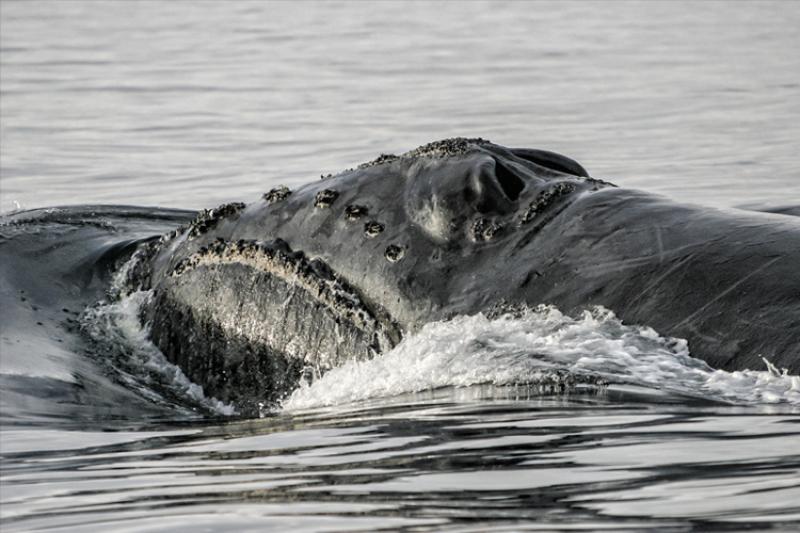Gray whales alter their calling behavior to compensate for increasing levels of noise to improve their chances of being heard by other gray whales. Hearing each other is key to whale survival. NOAA scientists Marilyn Dahlheim and Manuel Castellote found that the number of times a gray whale calls is adjusted depending on the type of noise heard and its loudness.
“We used underwater hydrophones to both collect and project natural and human-made noise into the waters of San Ignacio Lagoon to see how the whales would react, said Dahlheim. “When we projected a variety of different sound sources into the environment, whales were documented to alter the timing and structure of their calls. Acoustic response varied depending on the type of the noise played back. Calling behavior also was documented to change depending upon the duration of the noise (i.e., short versus long-term playback periods)."
Keeping Quiet
However, when noises such as oil drilling or test tones were played back, the whales were silent. Whales also remained silent when the sounds of transient killer whales, a predator, were projected. According to Dahlheim, it’s possible that the whales are staying quiet when confronted with unfamiliar sounds, as it could pose a potential threat.
Limits to Adaptability
Gray whales have a limited call repertoire - just six distinct calls. They produce low-frequency calls - generally ranging between 100 Hz – 2000 Hz. Interestingly, gray whales did not change the frequency range of their calls or length of their calls under any of the noise conditions included in this study. In contrast, Castellote and other scientists have found that baleen whales such as fin and North Atlantic right whales do alter their vocalization frequency range to a certain extent during elevated noise conditions.
Need to Communicate
Gray whales have the longest migration of any mammal, up to 22,500 km round-trip. In the eastern North Pacific, they travel from rich Alaskan feeding grounds to warm Mexican breeding and nursery areas. Their preferred coastal habitat exposes them to a wide spectrum of both naturally-occurring and human-made sounds which has the potential to interfere or mask their acoustic signals.
For marine mammals, especially whales, hearing constitutes their most important sense. If they can’t effectively communicate or hear natural sounds in their habitat they may not be able to orient their travel, find mates, avoid predators, and ultimately survive. Thus, whales must be able to overcome or circumvent noise.
Importance of this Study
Although completed three decades ago, this four-year study conducted between 1981 and 1984 represents the only gray whale playback experiment in which the effect of increased biological and human-generated noise was compared to the acoustic behavior of this species. The increasing concern of human-generated noise impact in marine ecosystems, the current increase in human pressures in Arctic waters, and the endangered status of the Western North Pacific gray whale population showing it headed toward extinction, all prompted the need to publish this important study.

